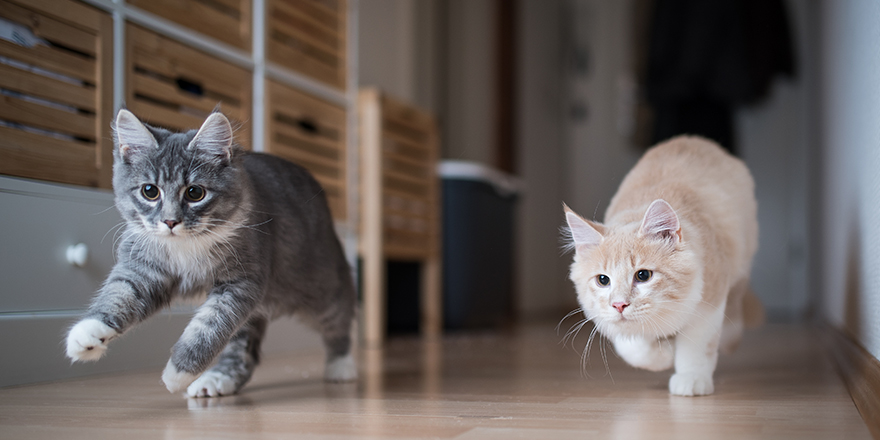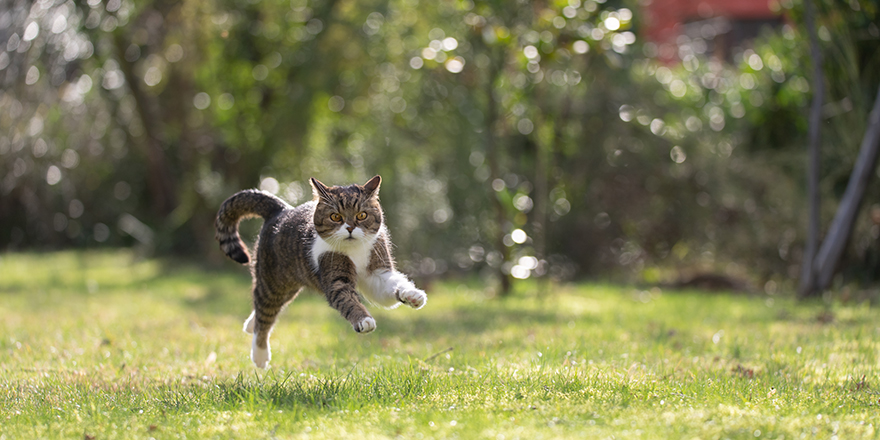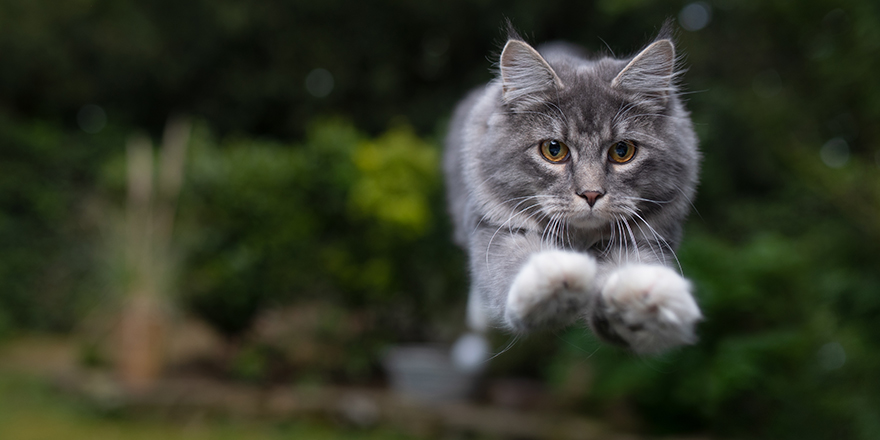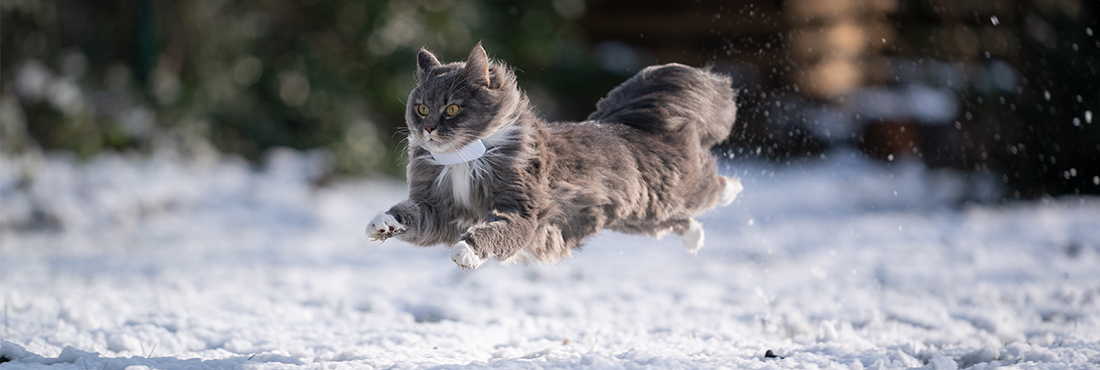When cats get the zoomies, they use their pent-up energy to run around the house. This normal cat behavior is very common and may show itself at any time of day. Cats run and effectively hunt imaginary prey, though more often than not they’ll chase after each other. If you’re wondering why your cat gets zoomies, all of the answers are below for your reading pleasure. We look at the ins and outs of cat zoomies, where the behavior comes from, and how to stop your cat kitty from chasing your other pets around the house.
What are Cat Zoomies?

The bursts of energy known as “cat zoomies” are a common part of cat behavior. It’s completely normal for cats of all ages to experience short, sudden bursts of energy where they seem to take laps around the house.
Younger cats are more likely to experience zoomies, but just because senior cats are getting on in years doesn’t mean you won’t see them get up and go, as well.
Frenetic random activity periods
The actual scientific name for “zoomies” is Frenetic Random Activity Periods. Frenetic is defined as “fast and energetic in a rather wild and uncontrolled way”, but zoomies is easier and more fun to say. The average cat owner isn’t going to have any idea what a frenetic random activity period is, but talk about cat zoomies, and everyone pipes up with a story or three.
Cat zoomies often happen around dawn or dusk, which means you may notice your cat becoming suddenly active as the day comes to a close or very early in the morning. This is because cats are crepuscular, and have a biological need to hunt at cooler times, rather than hunting when it’s too hot or too cold.
The thing about domestic cats is that they aren’t held to the same hunting skills or instincts as wild cats, which is why your kitty may get zoomies at odd times of the day, as well as dawn or dusk.
Why Do Cats Get the Zoomies?

The popular belief is that cats get zoomies randomly and for no reason, but this isn’t true. We know that this behavior is prevalent in kittens and young cats as a way to get rid of any excess energy that they have.
Because cats are often awake at night but don’t need to hunt when food is provided for them, they use these quick bursts of energy to get more exercise and burn off the energy they have but don’t need. This way, your kitten can settle down for a long snooze and be around the house more when you’re awake, too.
Cats will adjust to their owner’s schedule so that they can socialize. Cats are very social creatures and spend time watching their owners understand them. This is why your cat will randomly come up to you during the day and sit with you or loaf near you. It’s also why cats will sleep when you’re sleeping or lying down. They’re socializing, and it’s nothing to worry about.
Excess energy
The most common reason that your cat will get the zoomies is to burn off excess energy. Cats with high energy levels will get the zoomies more often than not, and that quick burst of activity then enables them to continue relaxing or even settle down to sleep.
If you have an older cat who seems to be more active than usual, isn’t sleeping a lot, and is losing weight, we recommend taking them to the veterinarian. Older cats exhibiting hyperactive episodes like this, coupled with the other symptoms we just outlined, could potentially be suffering from a condition called Feline Hyperthyroidism.
Feline hyperthyroidism
The condition known as Feline Hyperthyroidism slows down your cat’s metabolism. They may become intolerant to the cold, gain weight, lose hair, and become weak. Despite these very negative symptoms, it’s possible for cats with low levels of thyroid hormones to exhibit hyperactivity during their day, which can seem like the cat is having an episode of zoomies.
It’s difficult for cat owners to figure out what’s wrong with their cats when they are both sleepy and have episodes of activity. This behavior is fairly normal for healthy cats. Cats are known to sleep between 12 and 16 hours a day, after all. So, in combination with the lethargy and episodes of activity, it’s best to look out for fur loss, weakness, and weight gain.
Lack of exercise
If you aren’t playing with your cat enough, they will end up with pent-up energy that they don’t know what to do with. Ultimately, this energy is translated into short bursts where your cat runs a victory lap or three around your home.
Cats have little control when they’re doing zoomies, which can lead to them running into things and knocking objects off of tables. Be sure to spend time with your cat every day to keep their energy levels normal and give them enough mental stimulation.
How to Stop Cat Zoomies

- Play with your cat several times a day, especially before you go to bed.
- Let your cat graze throughout the day, rather than feeding them two big meals.
- Create a calm environment at home, using cat pheromone products if necessary.
- Get your cat a playmate so that they can focus some of their energy on socializing with them.
- Schedule a visit with your vet for advice.
Frequently Asked Questions
Play with your cat more often during the day to lower the chance of them exerperiencing episodes of activity at night. Alternatively, you could invest in a cat exercise wheel or automatic cat toys that have internal timers. It's also best to shut the door to your bedroom at night to keep your cat out of your space while you're sleeping.
It's possible that your cat has an underlying health condition that is causing their behavior, but it's more likely that they are experiencing what we know as "cat zoomies". This normal behavior is seen in cats of all ages, and it's just a way for them to get rid of excess energy that they haven't been able to use.

